Radiohead’s Ed O’Brien: “I was always drawn to sounds that didn’t sound like the guitar”
Groundbreaking guitarist on designing the Fender EOB Stratocaster, essential gear and the band’s ongoing tonal evolution
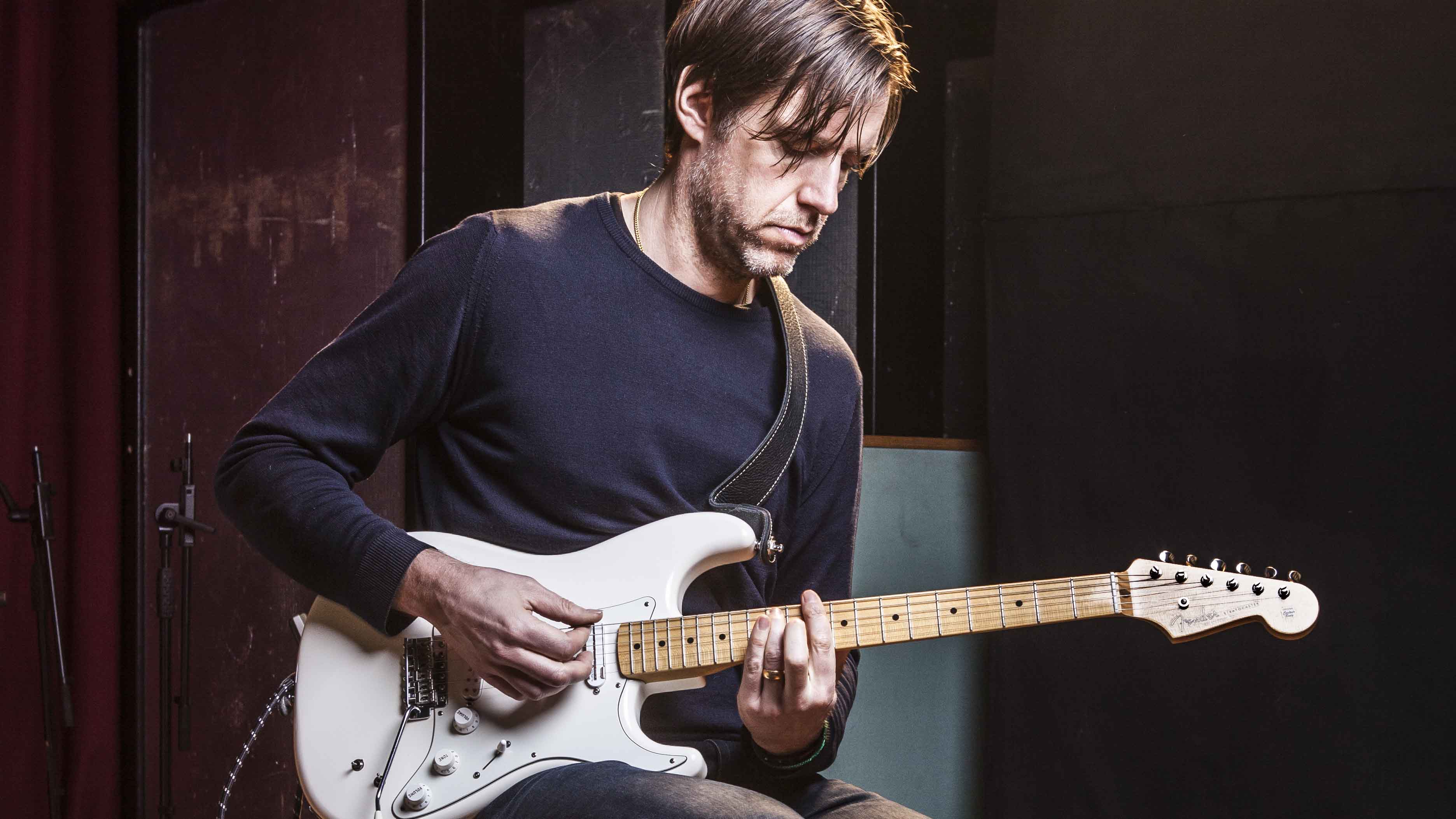
Ed O’Brien is the unsung hero of Radiohead. Where Jonny Greenwood is the man performing the wiry, acerbic anti-solos and Thom Yorke the rhythmic six-string backbone, Ed’s role is harder to define - but that’s exactly how he likes it.
Raised on ’80s indie heroes, Ed’s evolution has been fascinating to observe and, of course, to hear. From 2000’s Kid A onwards, the guitarist’s propensity for exploring new effects and textures, many of which are very much alien to the instrument’s traditional role, is integral to the band’s uneasy, ethereal edge.
It’s fitting, then, that Ed should be the man to tastefully radicalise the Stratocaster with the EOB Strat, a ‘designed-with’ model that stays true to the guitar’s iconic outline, but equips it with the otherworldly Fernandes Sustainer system and a hugely versatile set of pickups.
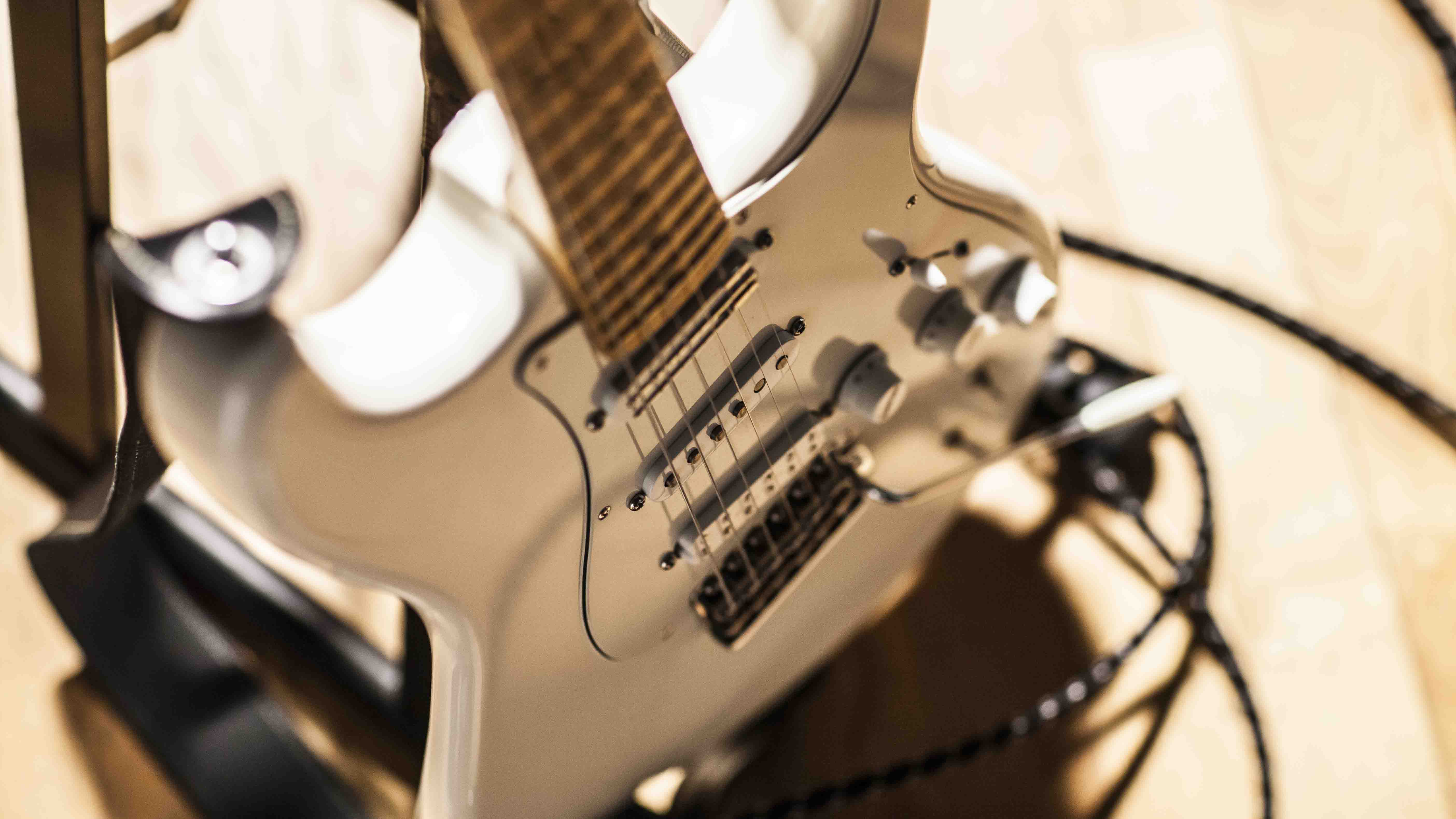
Ed’s enthusiasm for his collaborative creation is undeniable. We meet the guitarist in a small studio in west London, where he’s midway through a bout of sonic exploration with an early batch of EOB models running through his full pedalboard and amp rig.
After thanking MusicRadar for providing “a great resource” for gearheads like himself (you’re welcome, Ed), he hands us a guitar. “Try it - see what you think.” No pressure, then.
We’re pleased to report the final result is a seamless melding of Ed’s vision and the Strat’s idiosyncrasies: a chunkier-than normal neck is the first sign of something different, but a guided tour of the Sustainer’s possibilities through Ed’s well-stocked pedalboard is an eye-opener as to what a guitar like this can achieve.
Following that brief exploration of his Strat’s capabilities (during which we resist the urge to play Paranoid Android), we sat down with Ed to hear the full story of the guitar and his tonal journey through Radiohead’s unpredictable career: the essential tools, how he fits in with Jonny and Thom, and where he thinks the future of the guitar lies.
As someone who has played a lot of different guitars over the years, what first drew you to the Strat?
The Les Paul and the Tele are a lot more masculine. There’s a roundness, a femininity about the Strat that I really love
“I like the shape of it, I obviously like the sound of it, but I like the way it feels. I think British guitarists are all so drawn to the aesthetic - when you first get a guitar, the aesthetic is as important as how it plays; it’s gotta look cool.
“The first guitar I bought, when we formed the band back in 1985, was a Westone Spectrum DX. It was all-black, and Colin [Greenwood] had the matching bass. And it looked wicked, with coil-splits. I cottoned on pretty quickly that it wasn’t that nice to play… so the next guitar that I bought at the beginning of ’87 was a Squier Strat and that was enough. I couldn’t afford a Strat, but I could afford a Squier Strat. That was all I had until we got signed in 1991. And I didn’t need anything else - it was great. It did the job.
“So I’ve always liked Strats. Jonny [Greenwood] would take the piss out of me a bit with it being a bit ‘rock’ or something. I had a Rickenbacker as well, so I think that offset it. I loved the yin and the yang [of that], and when you wanted to finesse something or do something really beautiful, you’d pull out the Strat. It was brilliant with effects.
“It’s one of the most iconic guitars in the world, and I love the feel of it; I like the way it fits in the body. I like its femininity: the Les Paul and the Tele are a lot more masculine. There’s a roundness, a femininity about the Strat that I really love.”
When did the Sustainer pickup first become such an integral part of your sound?
I didn’t hear Led Zeppelin or Jimmy Page until I was 27, which was extraordinary. I didn’t know about those epic guitar heroes until then
“The big thing that relates to this is Kid A. We’d made three records; the first one is really guitar-y, a little bit of effects; the second one, there are more effects; the third one, OK Computer, I’m playing a lot of delay and we’ve got all sorts of simple stuff but really effect-y and the sound is getting less distorted with the guitars and it’s more about textures. When it came to Kid A, after the initial sessions, it was decided that the conventional-sounding band was not doing it for us, so the whole thing was, ‘Bring synths in, throw our tools away.’
“The first time I heard the Sustainer thing was on Michael Brook’s infinite sustain guitar - he gave one to the Edge on The Joshua Tree; that’s the sound on With Or Without You, that high-pitched thing. So as a young guitarist I was always drawn to sounds that didn’t sound like the guitar.
“The first guitarist who made an impression on me was Andy Summers, because when you heard Walking On The Moon, it was guitar, but with all the delay and the chorus, it sounded like he was on the moon. And then people like Edge and Johnny Marr, we were spoiled for choice - there were all these amazing guitarists who were trying to do things that didn’t sound like the guitar.
“I’ve always been drawn to people who put the song first. The guitarists who were important for me were Johnny Marr and Edge, people like that, and Peter Buck and Andy Summers. I didn’t hear Led Zeppelin or Jimmy Page until I was 27, which was extraordinary. I didn’t know about those epic guitar heroes until then. And John McGeogh was another big influence, from Magazine and Siouxsie and the Banshees. They were great guitarists, but they weren’t lead guitarists. Again, everything they did was about the song. That’s where I came from, so I guess that’s where I naturally gravitate.
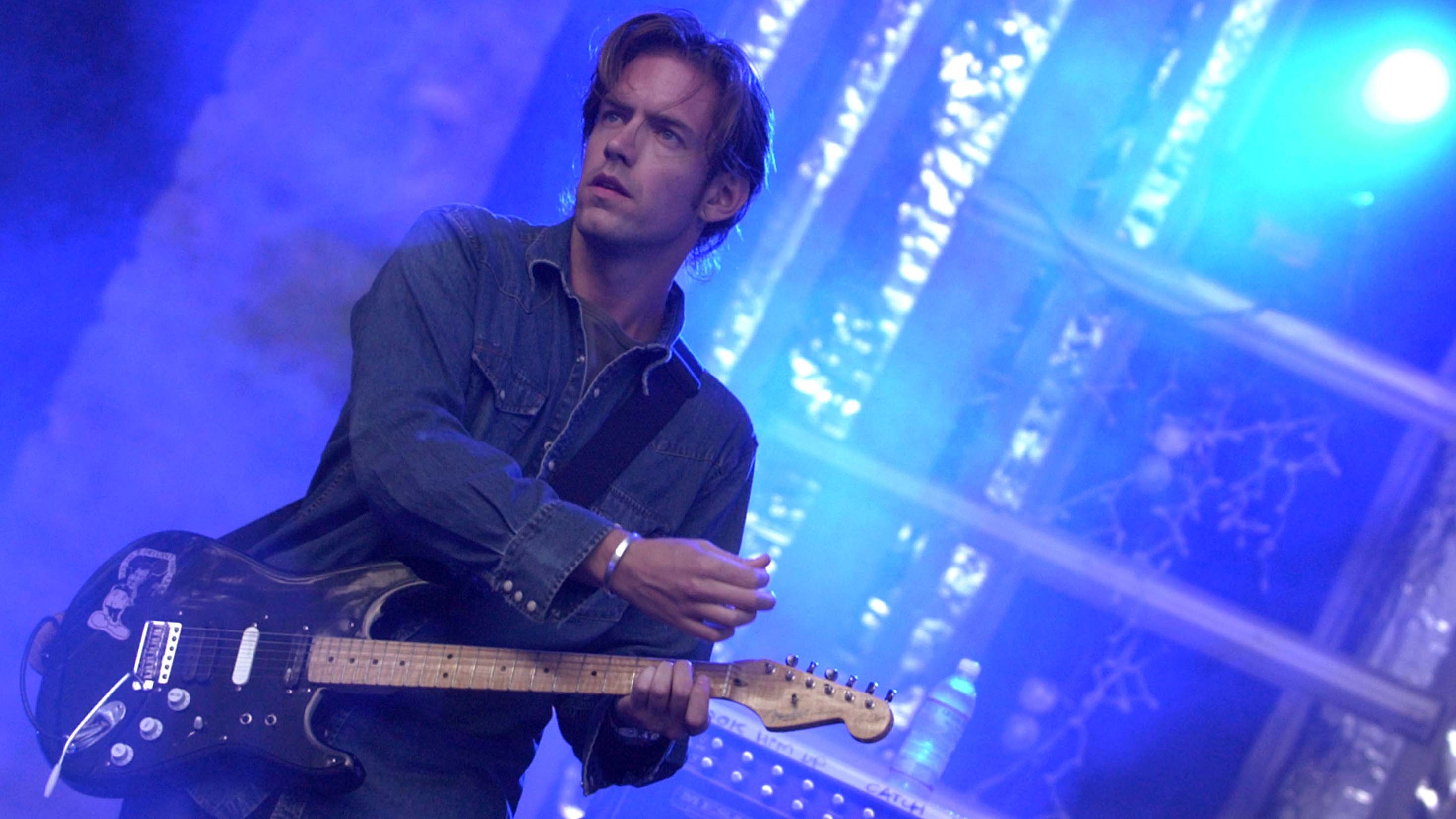
“So when we threw guitars out, I got in contact with Michael Brook and had a great conversation when we were in the studio. And he directed me towards Fernandes, who had the Sustainer. I had a Clapton Strat from the mid-’90s, and we put the Sustainer unit in there, and that’s when we started using it, around 2000.
“It’s always been a go-to guitar for me on every album; it does a certain thing. My problem with the ones that I had was that the way we did it was it sounded crap functioning as a normal guitar. It sounded great as a Sustainer.
“I want a guitar that can do both: in Radiohead, when we were playing live, I was changing guitar every song, and it was driving me nuts. Because your fingers are trying to get used to a different [instrument]… in a way, it was inhibiting. For the bulk of the set, I want one guitar that does the job. And that’s when I approached Fender - that was what I wanted: a guitar that could sustain, but also sounded as a great guitar.”
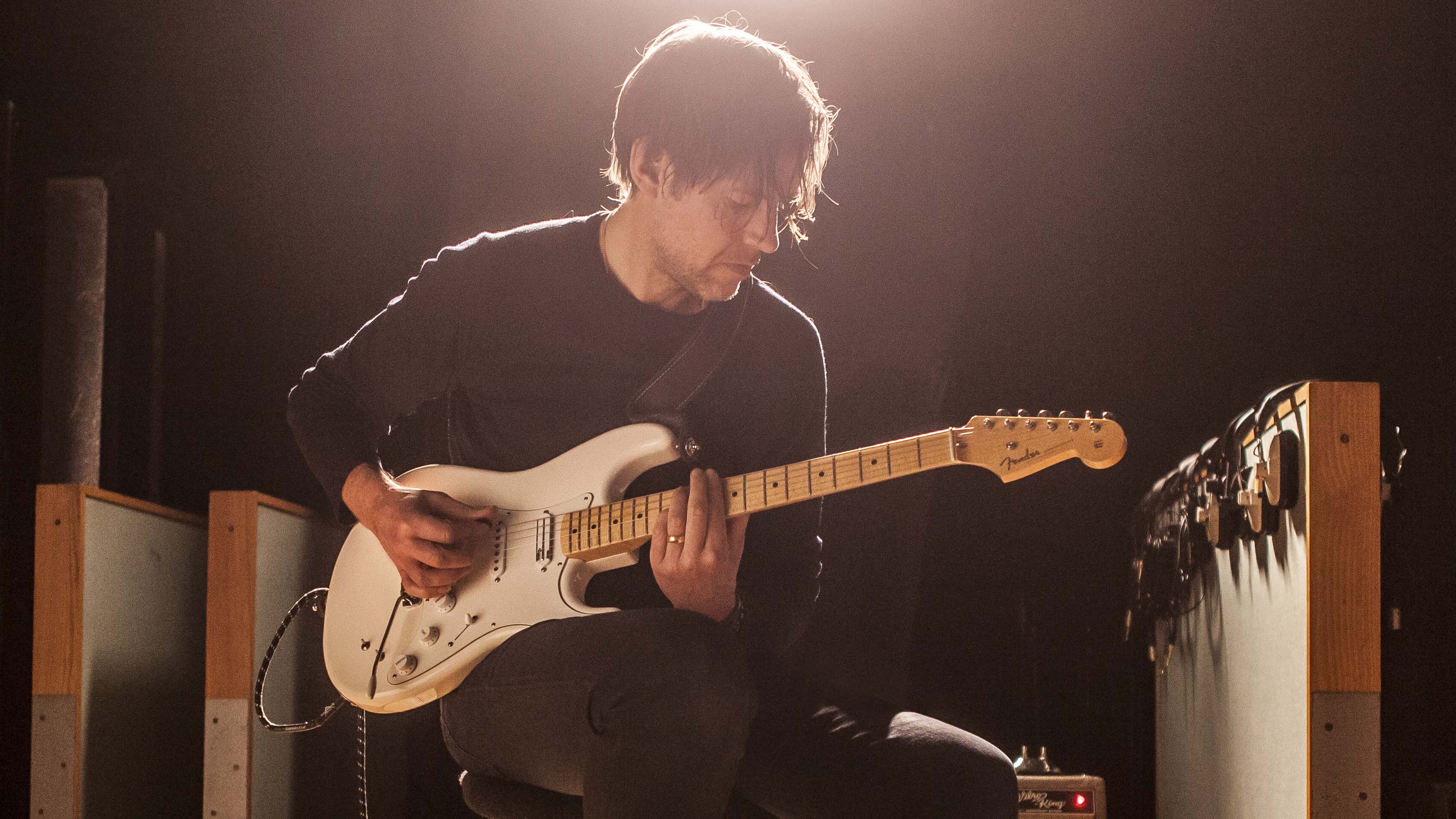
(Nice Dream)
How did the idea for the EOB Strat come about?
“It was early 2013. I literally had a dream about it - a really strong, compelling dream - and I woke up and I immediately wrote an email to Neil [Whitcher, head of Fender artist relations], who I knew through Johnny Marr. I’d never had any desire to do anything like this before at all, but the dream was so strong and it was complete; it was like, ‘I have to do this.’
“Neil passed it on to his boss, [senior vice president] Justin Norvell and it was about the story of the guitar and what I wanted to do. And a big part of it was that when you’re young, as a player, you usually start off on a budget, but there’s one guitar where you save up and make the step up, and that’s what I’m hoping this guitar might be: something that young players can get their hands on.
It’s a great-sounding Strat, and it looks amazing, but at the flick of a switch you enter another world
“And it’s fantastic. It’s a great-sounding Strat, and it looks amazing, but at the flick of a switch you enter another world. My whole thing with them was like, ‘I’m not interested in doing a signature.’ For a start, I don’t feel I’m worthy of that - people like Johnny Marr are different. I wanted to do a collaboration, a design: I’ve got this idea, but I want kids to be able to afford it - that’s so important. The Custom Shop does amazing stuff, but it’s out of the price range of most people.
“They were brilliant; Neil said, ‘We’ve got this amazing factory in Ensenada, in Mexico,’ and that became a really, really important part. So, Ensenada are making it, and I’m really, really chuffed to bits about that.”
Your name doesn’t appear on the headstock, but you’ve got the custom neckplate on there...
“Yeah, it’s my tattoo: the flower of life. This means a lot to me. I didn’t want to make a big song and dance about it, but I wanted something on there, and it’s not about me: this is a very, very ancient symbol, from all over the world, and I just thought it would be cool. Most people won’t even notice it, but it’s there.
“I didn’t want to have my name on it - it’s great if Radiohead fans like it, but I feel like it’s more than Radiohead; it’s more than me. I just want this guitar to be out there, because I think it’s got the potential of people doing extraordinary things with it, and doing different things and making their own mark on it. So, the less it has my name on it, the better. That’s why the ‘designed with’, that feels right.”
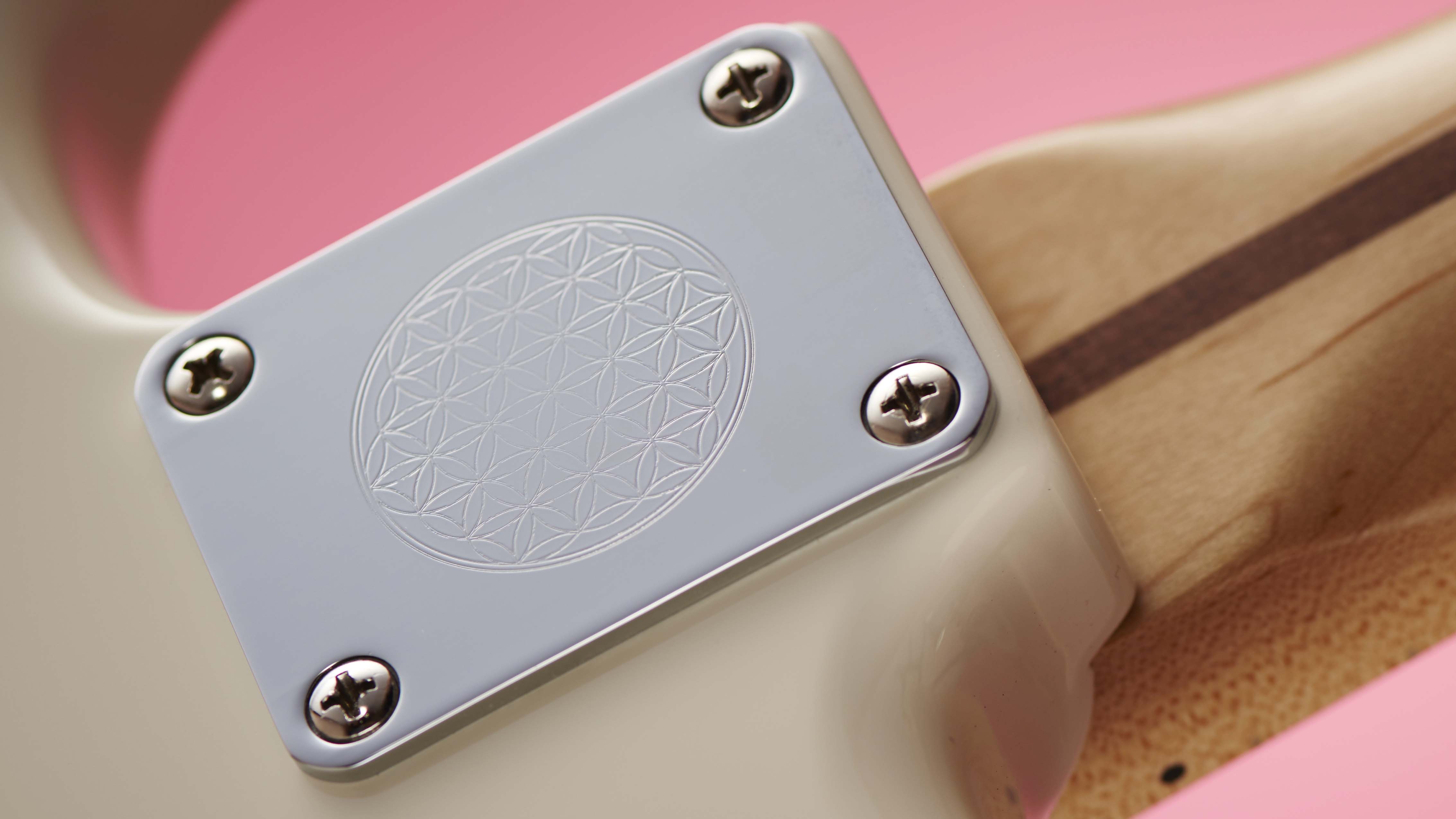
What were the key aspects you specified for the model?
“The first thing was the neck. Partly because I don’t own a lot of Strats, I don’t know any vintage Strats, because they’ve quite frankly been too expensive, so what they did was three years ago, we did a trip and went over to Fender - we started off in Corona in the Custom Shop with Alex Perez.
“The first thing we started off on was the neck; it was great - I was going up and [trying them]: everything from a Stevie Ray Vaughan neck, which is massive, and it’s amazing, but I’ve got big hands, so I wanted something that filled my hands that I would do the job with, but obviously, I wanted it to be a guitar that people with smaller hands [could play]. So I was just like, ‘Oh, that feels good’, and that’s basically a ’56 neck.
“Colour was important: I really wanted it to be white; I just felt the white suited. People told me about the lineage of the white Strat and how iconic it was, and I had no idea about the whole Hendrix thing, so there was that.
“And then we also went through trying the Sustainiac. This is the Fernandes Sustainer; I tried the Sustainiac and it’s a good unit, but there were some issues. So [Fender] went to Fernandes, which was good, because I’m used to the Fernandes, so I knew how it would work.
“The Sustainer works in conjunction with the bridge pickup and creates a kind of magnetic field. You can’t use the single coil here - it has to be the [bridge] humbucker. We had a few squealing issues on some of the prototypes, and that was from the humbucker not being right. I pick up a guitar, and I go, ‘I like this’ and ‘that sounds great’; I don’t go deep and go, ‘Well, why is that?’
“I liked a lot of those early-’90s and late-’80s Lace Sensor pickups; I love them on the Clapton Strats, and obviously Johnny has it on his Tele. They’re great-sounding pickups. And I just kept saying, ‘I want something neutral; I’m not fussed about it sounding like a vintage Strat - I want it to sound just like the Lace Sensors.’”
Those pickups are ideal for running through effects.
“Exactly. Perfect. And great for distortion, and great for clean sound, and just really great for a really true tone. I’m not a massive vintage Strat fan, the sound of it; that’s not where I come from.
“So then there was a bit of to-ing and fro-ing on the pickups; the beginning of last year, Alex put this Seymour Duncan Jeff Beck Jr in, and that sounded great, worked really well, so we got those two, and the last one was finding the middle pickup. And we found the Texas Special sounded great. It sounded a little bit different, there’s a little bell tone.
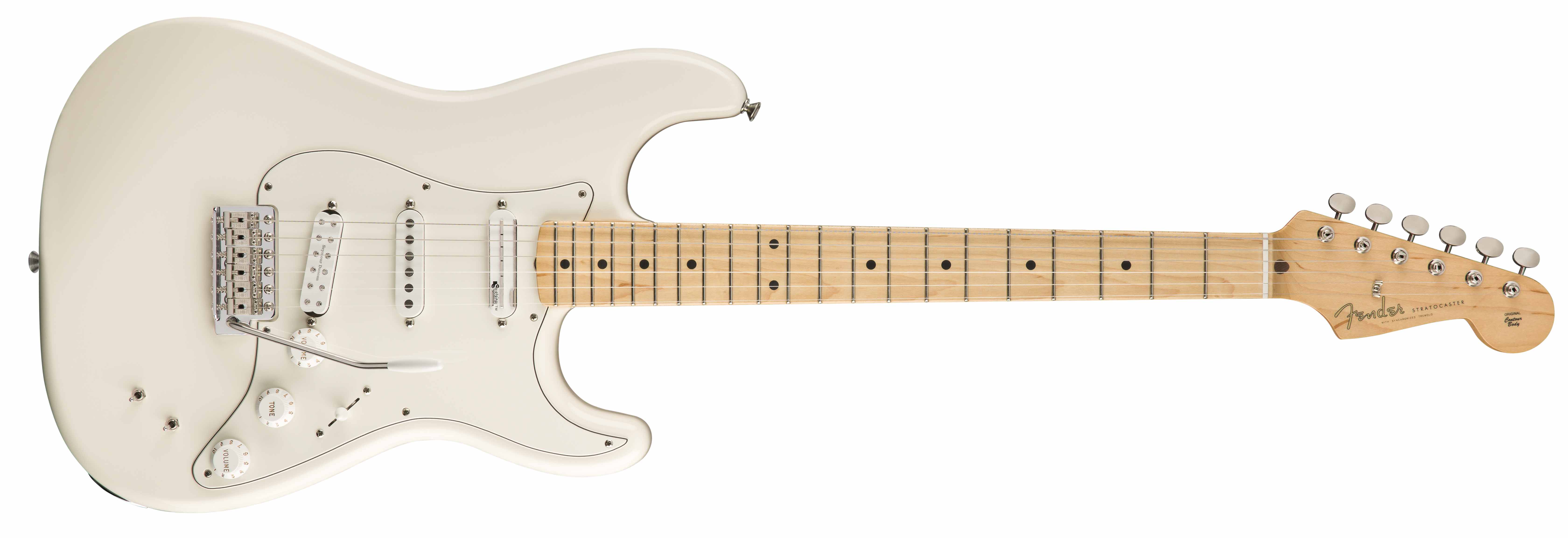
“What I like in a guitar is I like to have three quite different-sounding pickups, so I would normally play most of my stuff on the bridge, so I want my bridge to not be too thin and trebly; I want it to have a bit of guts to it. And then I want my neck pickup to be warm and fat and classically neck, and I want the middle one to do something exactly in between it, and that’s what the Texas Hot did.
“This seemed like a good place to [put the controls]. So you’re playing normally, and then you engage it. Because a lot of the time, I play, and it might be at the end of something you’re playing - for instance, it could be the end of a song with a lot of distortion, and you want to keep the feedback going, and you just click it in and it keeps it going. It had to be there, and I wanted to keep all this clear.
“And the other thing is, it had to look good. It’s really important, isn’t it? [laughs] I think you want it to look great, and so placing [the output jack] there, that works as well; that’s a bit like the old Fender Elites. I’m not a Strat purist, but to me, that feels very normal; I don’t miss it being there.”
The new model must have ended up replacing a few guitars in your live rig, then.
“I took three of them out on tour for the last three years, and Adam, my guitar tech, who’s been with me for 20 years, he’s a guy who likes to keep busy and he gets bored very easily. My only concern about the tour was I kept saying to him, ‘Are you bored?’ because the first six or seven songs are all with this guitar. I bring out the Rickenbacker and the Ric 12 and the 335 when I needed to, but this can do it all.”

Jigsaw Falling Into Place
Finding new sounds must be an ongoing quest for your role in Radiohead. In the evolution of the band, have there been times when you’ve had to rethink your approach?
“Every record! You don’t want to repeat yourself. When we got to Kid A, we started off the first session and it’s not really good. Thom’s been listening to a lot of Boards Of Canada and our conventional setup wasn’t doing it for us. And that for me is why this guitar came about, because we were downing tools, downing guitars, downing traditional ways of recording and making music.
Getting out of your comfort zone is the place where you do your best stuff
“It’s like anything in life, sometimes you need a shake-up, like, ‘Oh shit. What I’m doing is not great.’ Then you get out of your comfort zone. And getting out of your comfort zone is the place where you do your best stuff.
“That’s where this guitar came into being. Because I wanted a guitar that could sustain, so then it becomes more like a synthesizer. We took my Clapton Strat with Lace Sensor pickups that I loved, fitted a Fernandes Sustainer unit in it, and at the same time it was the birth of all these new looping pedals. The Akai HeadRush had come out and the Line 6 DL4. The combination of the two was… bonkers!
“It’s one thing making crazy sounds, but how do you harness them in a song? Sometimes you have to tack them onto a song, sometimes you have to pull them back and work them in. Kid A was the dramatic rethink, because we went from being quite traditional up until OK Computer - and it had served us really well, but it was basically guitar and keyboards.”
A lot of guitarists like to drive the song, but on Kid A, rhythm started to become more of a driving force in Radiohead’s music. Was that difficult at first?
“I don’t think I’ve ever driven a song in Radiohead - it was just a different way of thinking or feeling. I remember standing side stage for U2 at the Tibetan Freedom Concert [1997]. It was a classic band like The Who or something. Colossally loud, so powerful and so different to how Radiohead are as a band.
“It’s also different because Thom also plays great guitar as well. On the first album [Pablo Honey], particularly, he’s driving it with his rhythm playing, so my role was never to drive it rhythmically. I might arpeggiate and fingerpick stuff, but he would drive it as he sings it. So it was never difficult for me in that sense.
“What’s always been the hardest thing and used to be the most daunting was that Thom and Jonny used to write together a lot. So when we got to rehearsals, they had their parts worked out and I used to be like, ‘Where do I fit into this? Where do I find my space? You have that initial thought and then you think, ‘The song is great, okay, how do I work my way into this?’ And it was challenging. But that challenge is good because it forced me to think in a different way.
Jonny and I used to joke that there are very few songs where we play all the way through
“I totally understand about accompaniment, I understand about layering stuff, and I also like light and shade in a song - Jimmy Page always talks about this. I like quiet and loud. Jonny and I used to joke that there are very few songs where we play all the way through. Whereas most guitarists in a band, that’s their modus operandi. I guess there’s an orchestral sentiment to what we do that’s all about the songs.
“So I might change sounds three times in a song. And at the start of a tour it’s like tap dancing and it’s not really like playing. Thank God for the G2 and TheGigRig [switching system]. It’s more of a technical thing than a playing thing, but you get over that and the technical side becomes second nature so you can concentrate on playing.”
Radiohead are a band who have worked through challenging creative periods, with maybe confidence issues being part of that. All bands encounter that but do you have any advice to pass to players for working through times like that?
“It’s like in life in general. For centuries, people have been calling those moments ‘the dark night of the soul’. And I think the creative process completely mirrors it. You have those times when you think you can’t do it and you’ve got to hang on - that’s all you can do.
“I remember a time down in New Zealand, going down to play with Neil Finn, and that’s when I first met Johnny Marr and Philip [Selway] came down, Sebastien Steinberg, Lisa Germano and Eddie Vedder. I remember the first night I was a bit freaked out by the musical company I was keeping. I was pretty insecure - it didn’t help that I’d smoked a big spliff either [laughs].
“But it didn’t matter with those first two days of hanging on. Rather than the self-doubt, the ‘shit, I can’t do this’ thing. I think everybody gets that. You understand that you grow from those moments and those big challenges. As long as you don’t give up. That’s the key. It’s a test to hold on. Be open, don’t feel sorry for yourself and know that’s just part of the process. It doesn’t make it any easier and you might not sleep that night, but it’ll all be okay. You’ll look back on it and you’ll only remember the good bits.”
‘It’s okay to not play’: that can be a big thing for guitar players.
“I think that it’s a massive thing for players. The worst thing that happens as a band, and we always do this is, we get into a rehearsal room to start a new record and everybody plays through everything. It’s fucking rubbish!
“Again, it’s about the light and shade in music. Let the drummer and bass player do the work, let the singer. Andy Summers was a master of where and when not to play. Space. My favourite guitarists know when not to play. Then you make more of it when you do play. Make it count.”
Songs like Climbing Up The Walls and Let Down on OK Computer saw the band recorded dynamic and live in a room together. Did you last do that on In Rainbows?
“We did a bit. Bodysnatchers, that was live. House Of Cards was... I think bits of All I Need and 15 Step. They’re usually sections, though, whereas those songs you mentioned on OK Computer, they were [whole] songs and because of our, shall we say, somewhat limited palette at that stage, we played them live. But it was enough; our palette was sated.
“I remember when we did Climbing Up The Walls it was just like, ‘Fuck! We made that sound just playing in that room all together.’ It was the same experience with Let Down. It was like they were real moments of magic. And that’s probably the last time we’ve done it like that in the studio, which is kind of a shame, really. But I don’t think you can repeat yourself.”
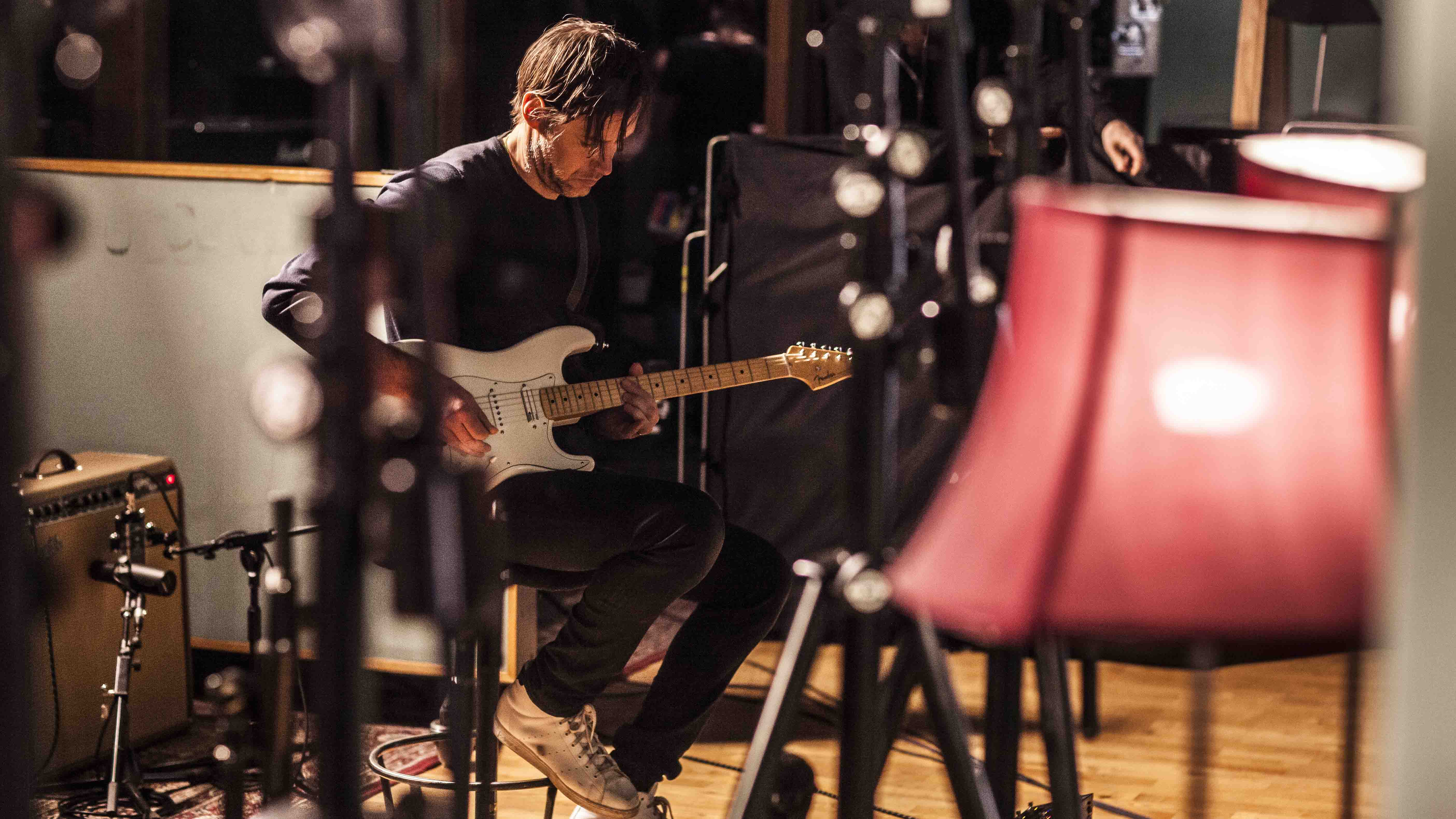
Little By Little
The EOB Strat joins your ever-changing setup; what are the key components of your guitar rig today?
“My pedalboard. I always have a [DigiTech] Whammy - and that again, in conjunction with the Sustainer, is really important. I like a wah, not for classic wah-wah but for tonal stuff. I’ll always have delays.
I haven’t taken out the Korg A2, because we’re playing so little stuff off The Bends, and with an MXR Flanger and a Whammy and distortion, I can fool it
“The thing with Radiohead is it’s nine albums, and usually with each album, there comes a different sound. So, for instance, on The Bends stuff and OK Computer, the basic gear that I had was distortion pedal, an MXR phaser, Korg A2 and a Boss DD-5 Digital Delay. And they are so the sounds of my parts on that record. Actually, the last two years is the first time I haven’t taken out the A2, because we’re playing so little stuff off The Bends, and with an MXR Flanger and a Whammy and distortion, I can fool it.
“But I wanted as well to get away from rack gear. I really love TheGigRig; I love the G2. It’s made having pedals possible. So I’ve got a Kingsley Page preamp/boost pedals. I’ve got a couple of those that I use for distortion, and I’ve got a Thorpy what they used to call the Muffroom [now Fallout] Cloud, which is an amazing Big Muff pedal. I love the Line 6 looper, the old DL4. I find it really intuitive.
“I love also Electro-Harmonix delays. I’ve been taking out the Deluxe Memory Man with the tap tempo, which they claim has the same chips; I think some of them don’t but some of them do, and I’m lucky because just by chance I bought one that sounds amazing. I do a lot of controlling with feedback and stuff with the delay, so I control that with an effects pedal. I’ve got the usual tremolos and [Boss] DD-5 delays out. A compressor. I really love the Kingsley pedals - they’re just brilliant for distortion and boost.
“It’s been great knowing [TheGigRig founder] Daniel Steinhardt, because he’s been brilliant. He was the first guy I met who felt the same pedals that I do. I remember the first time we met, we were just talking about the Deluxe Memory Man. It’s a feel thing, isn’t it? I’ve tried so much stuff out. I’m understanding it a bit more, like the Catalinbread, this new Belle Epoch Deluxe, it’s fantastic - they’ve got all the bits, and they’ve done the whole power thing that they have going on in the Echoplex EP-3, and instead of tape there’s digital.
“I’ve stopped using Vibro-Kings, only because they’re louder, and I’m using Audio Kitchen, which I love - Steve Crow’s amps are brilliant, so I’ve been using the Big Chopper. That’s live - I haven’t used it in the studio yet, but I will use it in the studio.
“I’ll still use my Princeton, and I love the Vibro-King, but our soundman was complaining that I was too loud, and you have to get it to [the sweet spot], and if you’ve got three guitarists… I’ve been playing those for nine years, and I love them, I think they’re amazing-sounding amps, but I had to bring it down in tone. And it’s always nice to get new gear and evolve, isn’t it?”
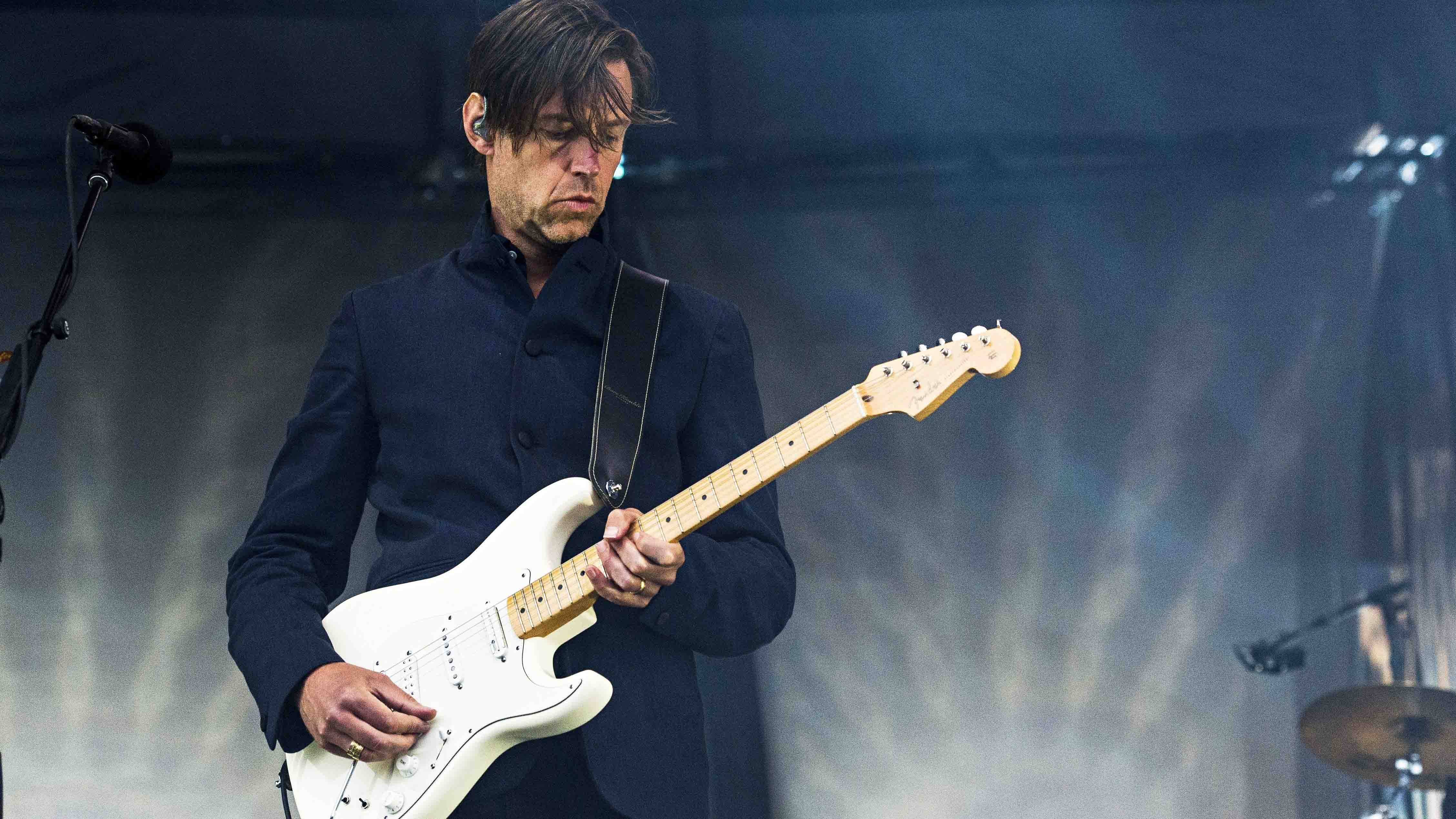
On that note, is there the possibility of any more ‘designed-with’ gear?
“It’s not something I’m seeking to do. This whole thing, because it did come from a dream, it wasn’t like I thought it; it’s like I felt it - I felt compelled to do it. My view on life anyway is I don’t really have grand plans; I have things I’d like to do - I’d like to make an album - but also what I like about the journey is being open.
“You know, six years ago, if you’d said I was going to make a guitar with Fender, I’d have gone, ‘Nah, that’s for people like Johnny [Marr], who’s such an iconic guitarist.’ But Fender have been absolutely brilliant, and they totally get it.”
Do you have any standout sounds that you’re most proud of, and how did you achieve them?
It would be very hard for me in Radiohead to do a gig without a distortion pedal, a Memory Man and a Whammy
“The Memory Man, the Klon, the Whammy… I use those a lot with the Sustainer. They’re all kind of variants on that. A lot of the stuff around In Rainbows was like that. [At this point, Ed launches into the thick, sustaining lines from All I Need.] On that song, All I Need, I had a Sustainer Strat with four bottom Es, so you’ve got a thicker [sound]. That’s used in conjunction with the Memory Man, then a lot of the songs, like Pyramid Song, you’d loop.
“A lot of the time, it’s a bit like you’re creating a canvas. That would be in accompaniment with Thom playing chords on the piano - you’re building up a cloud of effects behind. It would be very hard for me in Radiohead to do a gig without a distortion pedal, a Memory Man and a Whammy. I think if I had those three, then I’d probably cover 90 per cent of things. It could be another delay pedal, but that’s the default one.”
With more access to gear compared with when you started, has it become harder or easier to go to new places and feelings with tones?
“I think it is a bit [harder]. The amount of pedals I’ve bought in the last four or five years, particularly delay pedals, and you give it one listen and you go, ‘It’s good, but it’s not right.’ There’s a lot of really good stuff out there, but I’ve got to the stage now where I’m lucky. So I can buy an old reconditioned Binson Echorec and I plug in and I go, ‘This is amazing.’ So any new gear that comes out has got to do that to me. There’s lots of really good stuff out there.
“It’s interesting because with the onset of this whole thing with simulation, like Strymon, who make great pedals but it’s simulation. Digital simulation. The quality is so good, but I’ve had that and now if I buy something and I want to get inspired, it has to be almost better than that. We’re lucky, because a lot of boutique pedal makers are doing that.
“I’ve just got this amazing pedal called Infinite Jets [Resynthesizer] by Hologram - it’s extraordinary. I know it will be all over the next bit of recording that I do. I think we’re living in a golden age, aren’t we? And Joel [Korte, Chase Bliss Audio], I just bought the Tonal Recall pedal from him. His pedals have extraordinary amount of depth and have all these dip switches on the end of them. These people are going deep.
It’s about being moved, and it’s very hard to be moved by the same thing
“Electro-Harmonix are an amazing company because they always seem to do great stuff and on a budget. The HOG 2 is great. 20 years ago, I had a Korg A2, which I loved. It was 16-bit digital but it sounded great to my ears then. It’s about being moved, and it’s very hard to be moved by the same thing. It’s like making a record: you immerse yourself in that world and you use it all up and then try and find the next thing. It’s a matter of feeling your way through it. Trawling through and finding out what the new pedals or guitar are.
There’s so much stuff out there; 20 years ago, there wasn’t. The distortion pedals that are being made are incredible. All these companies - Diamond, and Catalinbread... one of the great things for me is hooking up with these people - Analogman and companies like that. One of the best things about being on the road - particularly when we’re in America - is I usually contact them and say, ‘Do you guys fancy coming down to a gig?’
“Like Spaceman pedals in Portland, Oregon that I love - I first met Zak, who runs the company, on tour. They’re stuck away doing this stuff and it’s real craftsmanship. I had to say to him, ‘Thank you, you inspire us.’ And inspiration for a musician is everything. If you’re inspired by your sounds, that keeps you going and music can come out of that.”
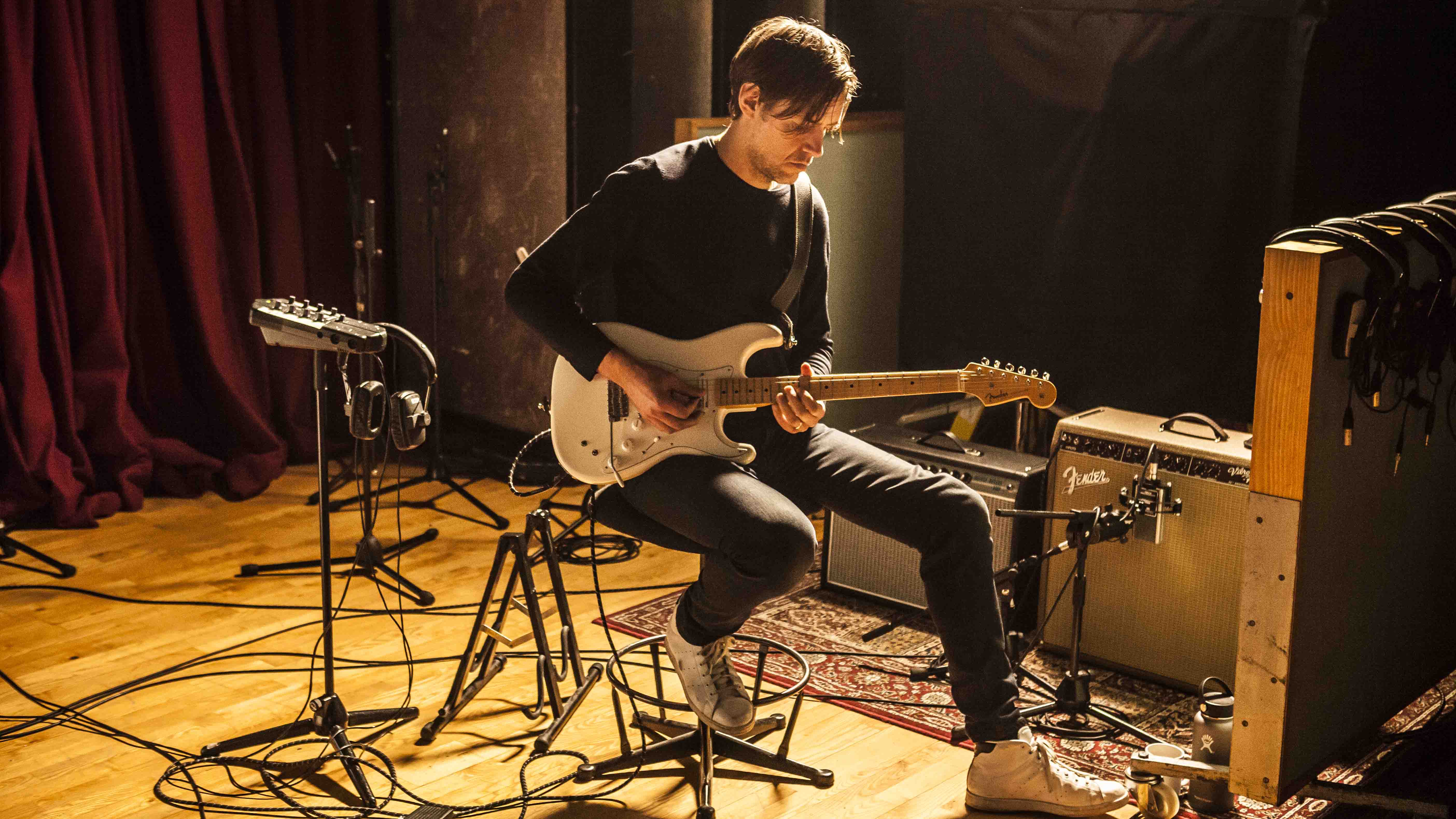
Everything In Its Right Place
Are you quite open as a band in terms of talking about guitar parts between yourself, Jonny and Thom - do you offer each other guidance or tend to stay out of each other’s areas?
“We kind of stay out of each other’s areas. The thing Jonny and I were trying to do, we’ve always weaved guitar parts. That idea that if you’ve got two or three guitarists, you weave parts within. And we talked about it, but we’ve never sat down and worked it out. It just happens by osmosis. Very occasionally it might get said, ‘How about trying something like this?’, but there’s a lot of autonomy within the band.
If you don’t come up with a guitar part, there’s no guitar part. Nobody is going to hold your hand. Nobody is going to say, ‘Why don’t you do that?’
“And likewise, if you don’t come up with a guitar part, there’s no guitar part. Nobody is going to hold your hand. Nobody is going to say, ‘Why don’t you do that?’ So you have to come up with something that really works for the song, and that’s quite a hard thing because there’s space within a song; what are you going to do? You have to come up with that yourself. And creativity is 90 per cent of stuff that you do doesn’t make it: that’s not a failure, that’s just part of the process. So if you try something sometimes it doesn’t quite work or bingo, you tried something and it changes it and puts it into focus.
“There’s a lot more talking between Jonny and Thom because they’ve tended to write with one another. Thom has used Jonny as a songwriting foil quite a lot, and when it gets into the rehearsal rooms it’s open to all of us, and that’s when arrangements get changed. So Thom and Jonny have established a working relationship, but it’s not normally about a sound. It’s about a chord or something, some melodic idea.”
How would you describe your gear philosophy compared with Thom and Jonny?
“Jonny, by the very virtue of the fact that there are many instruments he can play, he doesn’t necessarily seek new pedals and stuff like that. And by virtue of the fact that I just play guitar, I’m always seeking; so I search out a lot more sounds and pedals through the guitar. He gets his thing through composing for orchestras and extraordinary stuff. He likes different instruments; I really like the guitar, and it’s something that I feel comfortable with, and I’m just drawn to what guitars can do and the sounds of them, as well as great pedals.
Thom got the Strymon [TimeLine] delay pedal, and he’s going, ‘Wow, this thing’s amazing!’ And he said, ‘Do you know it?’ and I said, ‘Well, you haven’t noticed one’s been on my ’board for six years?’
“Thom is a lead singer, and he loves synths as well. I’m more of the gearhead. You know, Thom will come over to my pedalboard and say, ‘Wow, what’s this?’ Last year, he got the Strymon [TimeLine] delay pedal, and he’s going, ‘Wow, this thing’s amazing!’ And he said, ‘Do you know it?’ and I said, ‘Well, you haven’t noticed one’s been on my ’board for six years?’ [laughs]
“What I’ve done in the recording studio in the past is I usually get in an hour or an hour and a half early, and that’s when I do just freeform sound exploration - trying different pedals in different orders and putting various pedals in. It’s been good, because the thing about what Radiohead’s been into is finding different sounds, so with a guitar and an amp and pedals, that’s just a joy.”
Does the gear dictate the songwriting, in that respect?
“They all evolve at the same time. When I write, there are some times I write with acoustic, but other times I’ll write with a sound, and a sound that’s inspired you. And I’ve used this [system] a lot - the Sustainer again is a brilliant way of writing: it sets a palette. I wouldn’t say one dictates the other; it kind of evolves - it’s chicken and egg.
“Thom writes the bones of the songs, but there’s [gear-led] stuff on Kid A. Treefingers: that was the Sustainer with one of the first loopers that came in. I built the Sustainer guitar the same time that the Akai HeadRush came out, and the Line 6 DL4. These two things were extraordinary: suddenly you could do these great sounds.
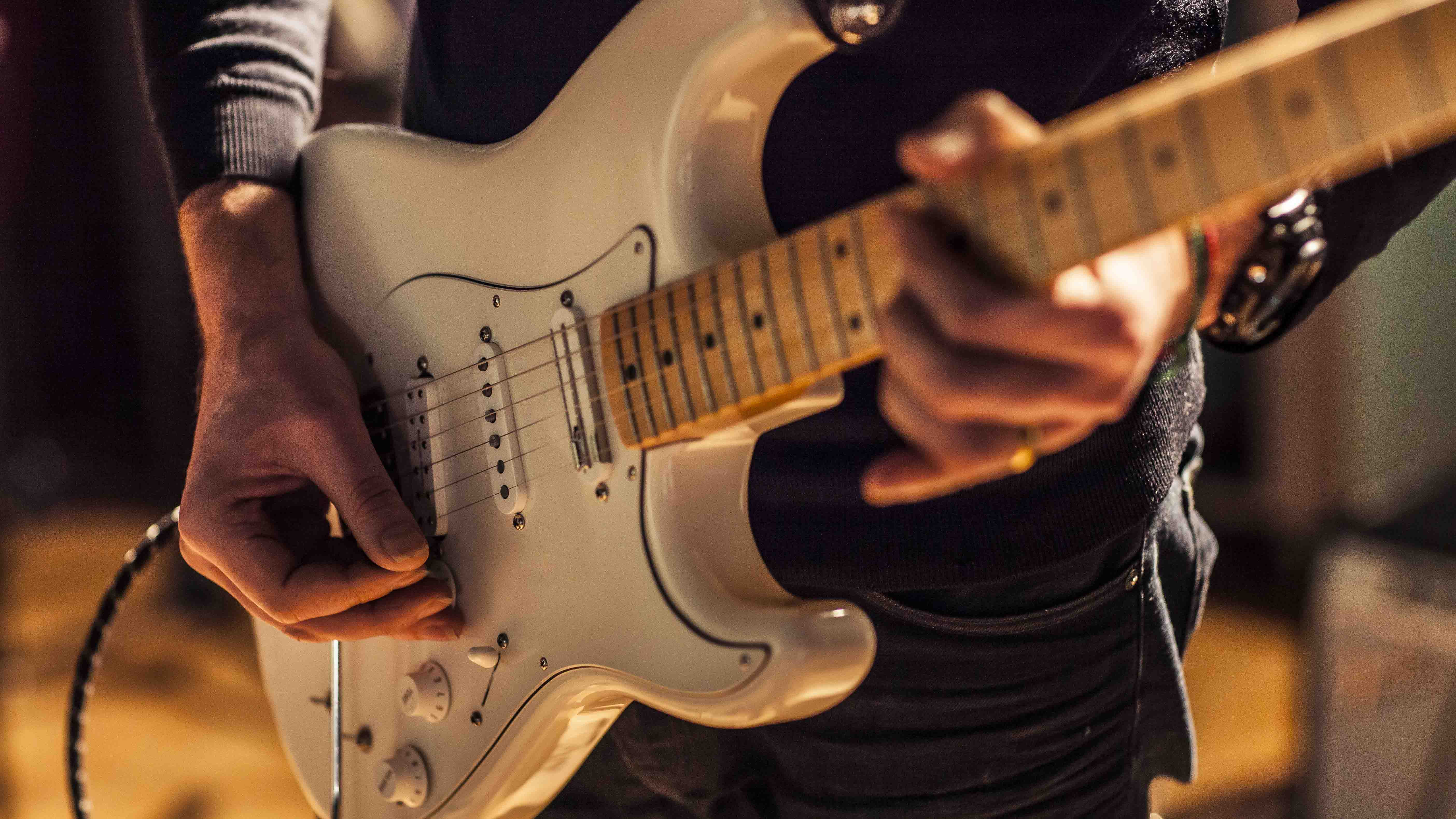
“Planet Telex [was effects-led]. But I wouldn’t say that was because of the sound of the guitar; the guitar responded to the gated piano in the studio. But a lot of the times, for me, when music is really in focus and right, it’s very visual. Sound, for me, is very visual, so I’m trying to find a sound that feels like the song. That’s kind of what I’ve been doing in Radiohead. You know, Thom might play something, and you go, ‘I can see this; I can see a place.’ It’s usually quite geographical. And then a lot of it, for me, is about finding the right sound to play that.
“I read a Miles Davis quote, which reassured me, because I can’t really play unless my sound’s right; it doesn’t flow, and I’m sure that’s the same with most people. And Miles Davis said the same thing. He said, ‘If my sound isn’t right, I can’t play. And if I can’t play, I can’t make love to my wife. And if I can’t make love to my wife…’ You know, there’s this chain thing. And it’s just like, ‘Oh wow, he’s saying that, and he can really play.’
“The sound thing is really, really key; it’s an obvious thing to say, but as well, using effects - I know that anything that makes it onto the ’board has truly, truly inspired me. And the bar is quite high - there’s a lot of good stuff out there, but it’s the really amazing stuff that I’m like, ‘Okay, that’s it.’ Because that inspires you to write great stuff.
“You know, you can plug into an old Echoplex and you can play for hours. That inspires you. Anything that I have - it’s like with this guitar - that’s what I’m looking for, and it’s a feeling thing; it’s not an intellectual thing. It’s something you feel, and you go, ‘This is exciting.’”
What are your thoughts on guitar’s place in music today?
“I was thinking about this yesterday - it’s weird, because if you want to make a cultural impact as a kid, it’s probably not through a guitar; it’s on decks, isn’t it? Jimi Hendrix nowadays would probably be a DJ, and doing extraordinary things.
I think guitar is as relevant as ever, really; it might just be that there are more options, musically, to express yourself these days
“But I think the guitar will always be there because it’s such an expressive instrument, and it’s very old. The guitar goes back thousands of years; it goes back to the lyre, you’re plucking strings. It’s something very, very fundamental. I’ve got an ngoni, from Mali, and it’s four strings and it’s a shell of a body with a piece of round wood, and there’s something just very primal about it. People are always saying it’s the death of the guitar, but it’s obviously flourishing. There’s more metal around, there’s more rock, and there are people doing great things with it.
“For me, band-wise, I love Savages. I think what Gemma [Thompson] does as a guitarist is brilliant, and the sound of it, and I love that band. And I love Warpaint. I love what they do. Again, it’s not about guitar heroes; it’s about beautiful guitar lines, textures, sounds. But then also I really like what Michael Kiwunuka is doing, and what Jimmy [Smith] and Yannis [Philippakis] do in Foals - I think they’ve got a great thing going on; I love their style.
“I think guitar is as relevant as ever, really; it might just be that there are more options, musically, to express yourself these days. You think about 50 years ago, it was organ and pianos and keyboards; synths hadn’t really come in, so in another way, synths come in, and there’s more on your palette. And now all the DJ stuff.
“More people are probably playing guitar and playing instruments because instruments are cheaper than they were and more accessible than 50, 60 years ago. You’ve just got more people making music, which has got to be a good thing. I think you’ve got the opportunity now to make some extraordinary noises and sounds, if you can be arsed.”
The Fender EOB Sustainer Stratocaster is available now for £979/$1,099.

Mike has been Editor-in-Chief of GuitarWorld.com since 2019, and an offset fiend and recovering pedal addict for far longer. He has a master's degree in journalism from Cardiff University, and 15 years' experience writing and editing for guitar publications including MusicRadar, Total Guitar and Guitarist, as well as 20 years of recording and live experience in original and function bands. During his career, he has interviewed the likes of John Frusciante, Chris Cornell, Tom Morello, Matt Bellamy, Kirk Hammett, Jerry Cantrell, Joe Satriani, Tom DeLonge, Radiohead's Ed O'Brien, Polyphia, Tosin Abasi, Yvette Young and many more. His writing also appears in the The Cambridge Companion to the Electric Guitar. In his free time, you'll find him making progressive instrumental rock as Maebe.